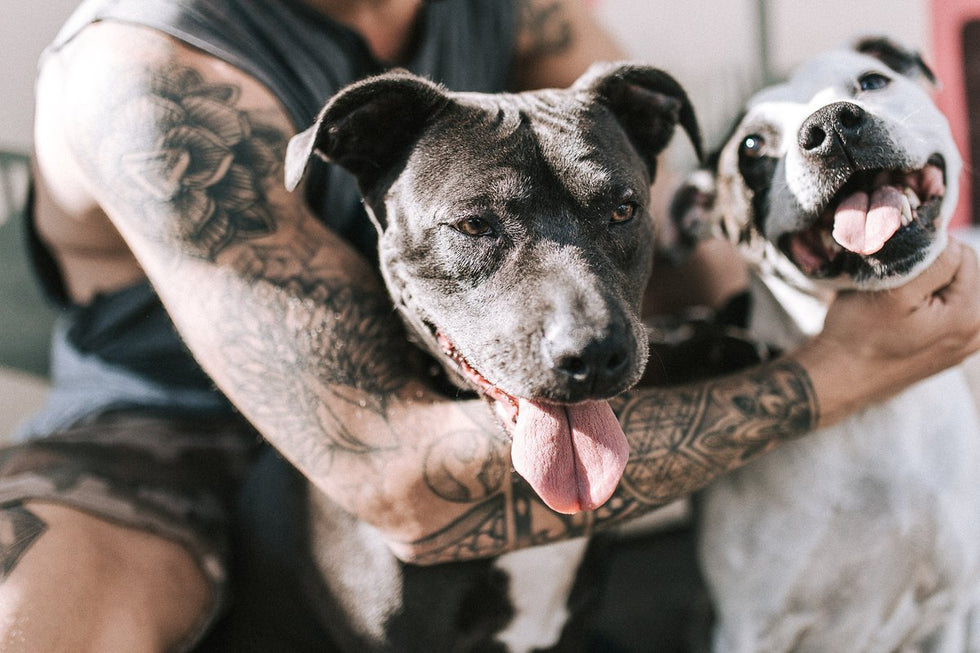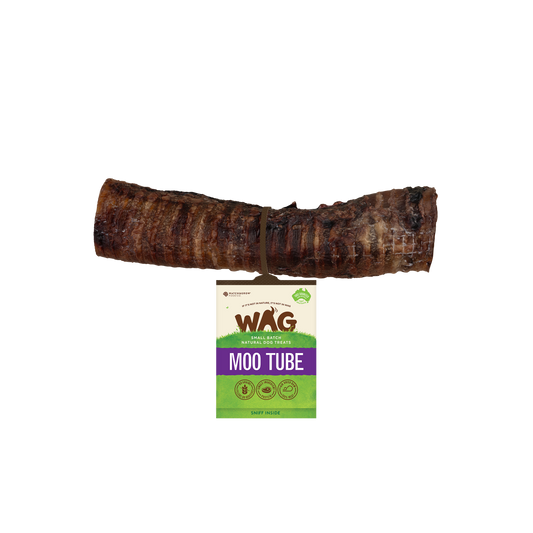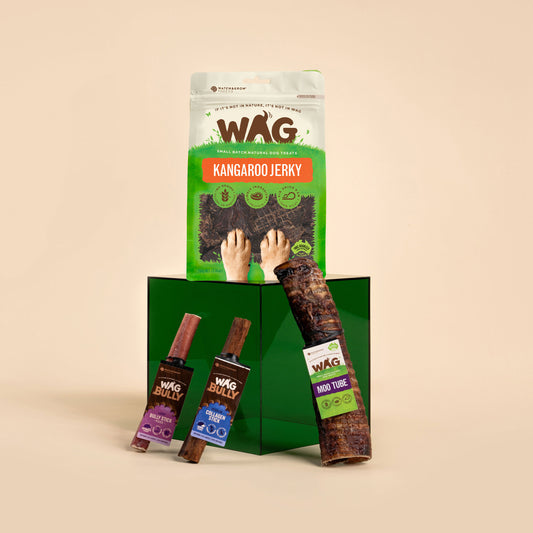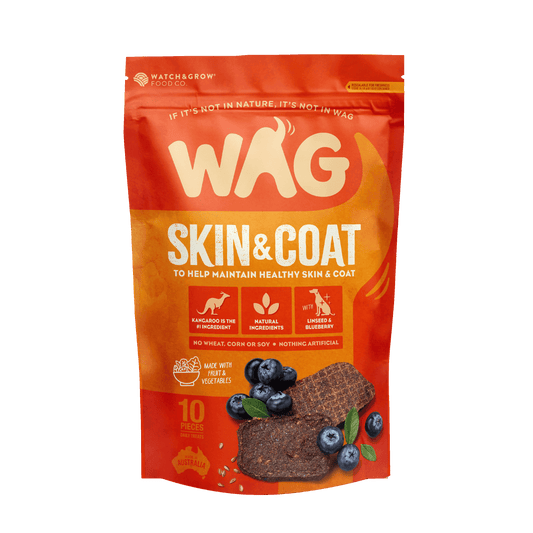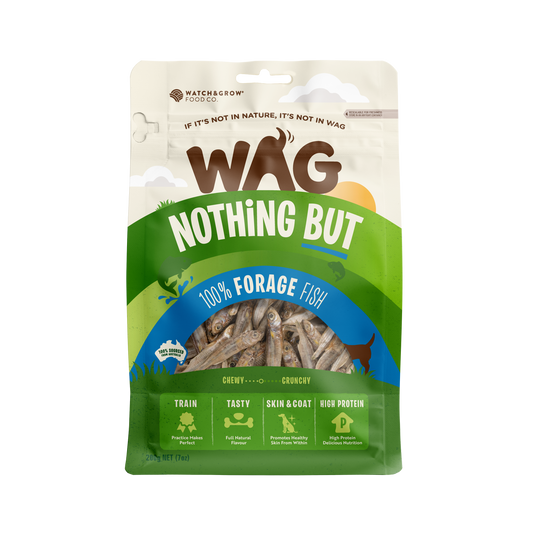Puppy teeth: a phase of life that all dogs go through, where they shed prickly fangs for fearsome pearly-whites.
Puppy teeth can come with all sorts of quirks, oddities, and complications. Here’s what you need to understand what your pup is going through and what you can do to help ease their teething aches.
When do puppies get their first teeth?

For the first two weeks of life, puppies have got nothing but gums. Just like us, they are born completely toothless. Unable to stand, walk, or open their eyes, very young puppies are completely defenceless and rely entirely on their mother to feed and care for them.
At the two-week mark, puppy teeth – sometimes referred to as ‘milk teeth’ – begin to emerge. These will continue to grow in until your puppy is eight-weeks old. Puppy teeth are considered to be ‘deciduous teeth’ as they are only temporary and are designed to eventually make way for permanent adult-doggo-teeth.
How are puppy teeth different to adult teeth?
If you’re ever encountered a puppy at this point – firstly, how cute are they?? – you’re probably already aware that puppy teeth are very different from their adult counterparts.
Whilst adults will eventually sport an impressive 42 teeth, puppies are not quite so well-endowed, and will only develop 28 in their short beginning of life. As puppies will be nursing for much of their young life and then transferred to a softer, easily edible ‘mush’, they will do almost no true chewing. This means that instead of developing molars, puppies will sport a mouthful of milk-teeth that are long, skinny and ultra-sharp.
It’s for this reason that puppy teething, nipping and chewing can be a dreaded part of the puppy-owning experience, and why creatures so tiny can deliver such painful pin-pricks!
Why do puppies get puppy teeth?
There has been much speculation as to why puppies develop milk teeth instead of immediately growing their grown-up chompers, but research suggests these have two principal purposes:
Puppies are beginning the weaning process
If you were served warm, delicious food every day without putting in an iota of effort, wouldn’t you want to keep it that way? As puppies nurse, they’re not required to exhibit any of those pesky adult behaviours that their wild counterparts do to survive. They’re blissfully exempt from strenuous activities like hunting, foraging and scavenging for food – they don’t even have to sit up!
Those sharp, pin-prick teeth don’t feel terribly pleasant on our hands, fingers, and ankles – and they feel even worse to a mother dog’s tender, sensitive teats. The emergence of puppy teeth naturally begins to jump-start the weaning process, as the mother develops a deterrence to nursing and will start refusing her puppies from suckling.
Puppies develop bite inhibition
The time a puppy spends with their mother and littermates is a crucial period of development. Within this formative stage of life, a puppy will learn a variety of important lessons about social interaction, play and appropriate canine behaviour. One of the most critical lessons will be understanding bite inhibition.
As puppies grow and play with their littermates, they’ll soon learn that nipping and biting without inhibition isn’t much fun. If a puppy bites too hard, their littermates tend to squeal and stop the game – and often they bite back harder!
Bite inhibition is an invaluable characteristic for a puppy to have, allowing them to have positive canine relationships in the future and avoiding preventable squabbles. And because puppy teeth are so terribly sharp, puppies tend to learn this lesson very quickly!
Why do puppies bite everything?!
It’s very normal for the teething process to be relatively uncomfortable or painful for a puppy. Teething can cause gums to become red, swollen, and occasionally they may even bleed. Teething can also trigger a variety of other symptoms, including:
- excessive drooling
- restless behaviour
- a reduced appetite
- a minor fever.
So if they bite you, don’t worry – it’s nothing personal!
How can I ease my puppy’s teething pain?
Some puppies might tolerate teething with very little concern. Others might be more affected. Our job as dog owners is to supervise our puppy as much as possible, taking steps to reduce their discomfort as much as we’re able to.
There’s a huge variety of useful tools we can utilise to reduce teething discomfort, all of which are preferably to your puppy chewing the chair legs.
Light Chews
Light chews such as WAG Moo Tubes are a seriously good way to ease teething aches and keep puppies occupied. Treats keep puppies engaged far longer than traditional toys, their delicious taste challenging the pup to finish it off. Puppy-safe natural chews are the tip-top option, check out WAG's Puppy Pack for a selection of delicious chews for keeping those baby shark teeth occupied.
Stuffing toys
Stuffable chew toys aren’t really a hidden gem – dog owners, trainers and vets alike are frequently signing their praises, and for good reason. Choosing a puppy-safe toy like a Kong and stuffing it full of delectable treats can keep any doggo occupied for hours, giving them time to soothe their sore teeth and gums while they dig for delicious gold.
Frozen treats
Frozen treats and chews will help numb and soothe a sore mouth, encouraging swollen gums to chill-out. Tossing your stuffed chews or natural treats in the freezer can be one of the most effective ways to ease teething pains – as well as extending the time your pup spends indulging.
What happens if my puppy’s teeth don’t fall out?
Transitioning to adult teeth doesn’t always go smoothly. While this can be due to breed, diet or just plain bad luck, it’s important to always keep an eye on your puppy’s teeth to make sure they’re not overstaying their welcome.
Retained puppy teeth can be bad news if left unattended – contributing to plaque build-up, discomfort and even altering your dog’s dentition. If by seven months your doggo’s milk teeth haven’t vacated, it might be time to visit a vet. They’ll advise whether you can hang on a little longer or if surgical intervention is required.
Shop the Recipe
WAG Team
Up Next
How to exercise your dog in hot weather
